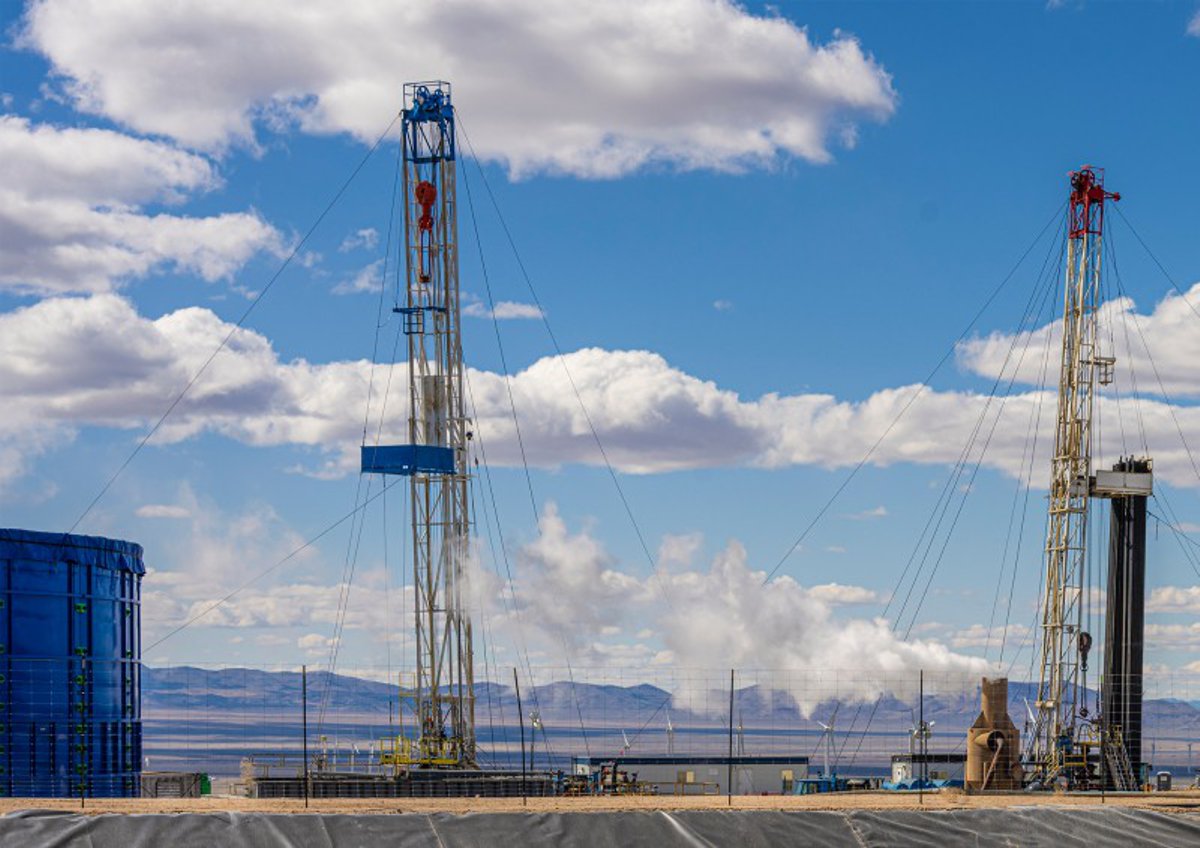University of Utah announce crucial Geothermal Energy Milestone
A major University of Utah-led geothermal research project, funded by the U.S. Department of Energy (DOE), achieved a critical breakthrough in April after hydraulically stimulating and circulating water through heated rock formations a mile and a half beneath its drill site in the Utah desert and bringing hot water to the surface.
The test results are seen as an important step forward in the search for new ways to use Earth’s subsurface heat to produce hot water for generating emissions-free electricity.
The successful well stimulations and a nine-hour circulation test were the fruits of years of planning and data analysis at the Utah FORGE facility near Milford, 175 miles southwest of Salt Lake City.
More than two-thirds of the water that was injected underground and pushed through the fractured formation—acquiring heat on the way—was extracted from a second well, offering proof that enhanced geothermal systems (EGS) technology could be viable, according to John McLennan, a co-principal investigator on the project formally known as the Utah Frontier Observatory for Research in Geothermal Energy, or Utah FORGE.
“Nine hours is enough to prove that you have a connection and that you’re producing heat,” said McLennan, a University of Utah professor of chemical engineering. “It really is a Eureka moment. It’s been 60 years coming, and so this actually is significant.”
Importantly, the maximum induced earthquake from the tests was magnitude 1.9, falling well short of the threshold of the felt seismicity that has plagued other geothermal projects, according to FORGE’s principal investigator Joseph Moore, a professor of civil and environmental engineering.
Utah FORGE is a $218 million research project, involving numerous institutions and industry partners, funded by a DOE grant to the U’s Energy & Geoscience Institute. The project aims to develop and de-risk new geothermal technologies that could potentially be deployed all over the world, not just where conventional geothermal plants are sited.
“We are excited to have had such great success during our most recent stimulation and circulation testing,” Moore said. “Each test brings us closer to realizing the full potential of enhanced geothermal systems and the important role it will play in the world’s energy portfolio.”
Under its Energy Earthshots initiative, the Biden administration is looking to increase the U.S. geothermal electrical generating capacity from the current 3,700 megawatts to 90,000 by 2050, and lower the per megawatt-hour generating cost by 90% to $45 by 2035.
The FORGE results were celebrated by Jeff Marootian, the DOE’s principal deputy assistant secretary for energy efficiency and renewable energy, as a foundational step toward a clean energy future.
“The ability to tap more of the Earth’s natural heat through enhanced geothermal systems will expand access to affordable, secure and resilient clean energy for everyone,” Marootian said.
For this recent test, FORGE personnel and industry specialists directionally drilled two boreholes—one for injecting water underground and the other for extracting it. The injection well is 10,897 feet long and drops to a depth of 8,559 feet below the surface.
The two wells go straight down for the first 5,000 feet, then bend to a 65-degree angle, running parallel to one another for several thousand feet. The injection well’s non-vertical run lies 300 feet below the production well bore.
Over a two-week period in April, they hydraulically fractured, or “frac’ed,” the wells in 12 stages to create fissures in the hot rock formations that water could pass through.
After fracturing, the crew then conducted the nine-hour circulation test, pumping water at a rate of 13 barrels (542 gallons) a minute down the injection well and monitoring what emerged from the production well.
The results were promising, reaching a point where 70% of the injected water was recovered at a temperature that reached 282 degrees Fahrenheit, according to Moore.
“We see that both the discharge rate and the temperature are continuing to increase and the test was shut off before they fully stabilized,” he said. “So exceptional tests. We have achieved commercial production rates.”
While these results demonstrate a hydraulic connection between the wells, researchers hope to achieve higher flows in future tests. The data are being analyzed to plan additional fieldwork, including a 30-day circulation test in July.
“We speculate, and we’ll see this in the 30-day test, that as we fill the fracture system back up, this number is going to get to where I’m suspecting it’s 85 to 90% efficiency,” McLennan said.
Equally promising was the absence of any noticeable ground shaking associated with the stimulations and circulation test. Utah seismologists led by geology professor Kris Pankow, associate director of the U of U Seismograph Stations, are overseeing an extensive network of seismometers to document ground movement associated with the project.
Thousands of tiny seismic events were recorded during the recent tests, the largest registering a magnitude of 1.9, Moore said. FORGE has implemented a “traffic-light” system, where testing is interrupted whenever a quake greater than magnitude 2 is detected.
“It was really impactful that we did not have to do that, that we were able to pump these hydraulic fractures without causing problematic seismicity,” McLennan said.




















